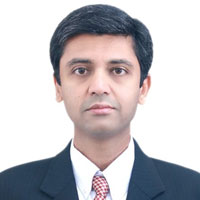In this first of a five-part series, IDC Analyst Nikhil Batra speaks with John Parikh, Vertiv's VP of Marketing & Strategy, Asia Pacific, about the challenges and opportunities in India.
By Nikhil Batra, Associate Research Director, Telecommunications and IoT, IDC Asia/Pacific
Across Asia/Pacific, governments are promoting development programs to counter economic contractions resulting from the pandemic. This push for infrastructure spending has spurned opportunities for co-creating a parallel digital ecosystem to track things, people, and services, in a push toward a digital and touchless society. In the last 18 months, the acceleration of digital transformation initiatives has led to digital supply forces such as the Internet of Things (IoT), cloud, and 5G migrating to the edge to meet evolving customer multi-access edge requirements.
Despite the growing importance of communications service providers (CSPs) and their partners, as per IDC APeJ Capex Tracker, 1H 2021, the forecast shows that total Asia Pacific excluding Japan Communications Service Provider (APeJ CSP) capex for 2021 will register low single-digit percentage growth over 2019–2020 levels and will stay on this trajectory through 2024. And all the edges in the ecosystem pertaining to the enterprise, telco, operations, and device will need to contribute equitably for an economically viable solution in the ecosystem.
The story for India in terms of supply disruption becomes even more glaring when 33% of enterprises surveyed are planning to deploy edge services as compared to just 21% of Asia/Pacific organizations over the next two years. Yet only 22% of Indian organizations suggested to host branch edge virtual network functions (VNFs) at the service provider’s edge location. This is partly attributed to the rising connectivity costs as well as security issues that are prominent at the edge. This poses a two-fold challenge for suppliers:
1. Partner more broadly in the ecosystem to position purpose-led, pay-per-use service, and centrally managed offerings of the future. For this, suppliers need to think beyond the traditional client-vendor relationships with CSPs. They need to pivot from providing 'vanilla' service offerings like transforming CSP central office (with traditional base station remote management) and improving backhaul (power demand sensing at the BSC level) – to a more partner-centric agile service model for new age players encompassing towercos, over-the-top (OTT) providers, and IP-1 telecom license holders such as Tata Power, Indian Oil, GTL Infrastructure. IDC believes this will also give way to new monetization opportunities at the edge for B2B (manufacturing operations, health, asset management for public infrastructure, smart grid), as well as B2C (smart home, personal wellness) segments.
2. Enforce trust with 'secure service edge' offerings. Here, critical infrastructure providers need to market power/back-up and thermal management, pre-configured power and cooling equipment and services, and end-to-end monitoring systems to enable and support various business models securely. This will provide the critical balance of latency, throughput, bandwidth, with pre-fed security profiles for diverse edge applications. IDC envisions that in manufacturing setups globally, the number of new operational processes deployed on edge infrastructure will grow from less than 20% today to over 90% in 2024. Similar opportunities are also expected in retail: By 2025, connected store edge platforms will be needed for almost all automated checkout processes. Across sectors, by 2024, 25% of organizations will improve business agility using edge data with cloud-based platforms. To that end, the operations at the edge will inherently push for an 'end-to-end' IT management solution which is more business centric. For keeping costs in control, the demand for automated yet hardened digital infrastructure will thus increase at the edge.
Different critical infrastructure companies will tackle these challenges in their own ways, but few companies form the glue in the ecosystem with a sharp focus on the much-talked-about environmental, social, and governance metrics. I caught up with John Parikh, Vertiv's VP of Marketing & Strategy, Asia Pacific, to understand how Vertiv, a global provider of critical digital infrastructure and continuity solutions, is planning to tackle these two challenges at hand and position its offerings nationally.
|
IDC's Question: As an industry expert in collaborating with customers and building next-gen infrastructure projects, what has been Vertiv's strategy to partner, co-create, and co-sell with its technology team of customers in India? How is Vertiv leveraging a thriving ecosystem of 250+ telco supplier vendors to create compelling edge solutions for both India and export markets? Vertiv places importance for interconnects with supplier networks, cable landing station providers, and internet exchanges to drive connectivity to the unconnected with its massive 'points of presence' footprint. Ultimately, a sound use case will be one which piggy backs the ESG footprint to a district edge data center to improve energy consumption at an ecosystem level– Vertiv's platform centric approach stitches suppliers and buyers to bring in higher power density with smart and continuous monitoring capabilities. We have developed and deployed customized DC power solutions for most of the renowned operators and tower companies in India. Some of these projects have been at massive scale of deployment which range from 6kW to 200 kW capacity across India. |
IDC envisions a future connected enterprise that helps create pervasive, personalized, and secured experiences across customer, vendors, and partners. The true test of this enterprise will not be at the network core but the network edge – where it needs to address uneven connectivity across different environments, locations, and use cases with reliable and robust network.



